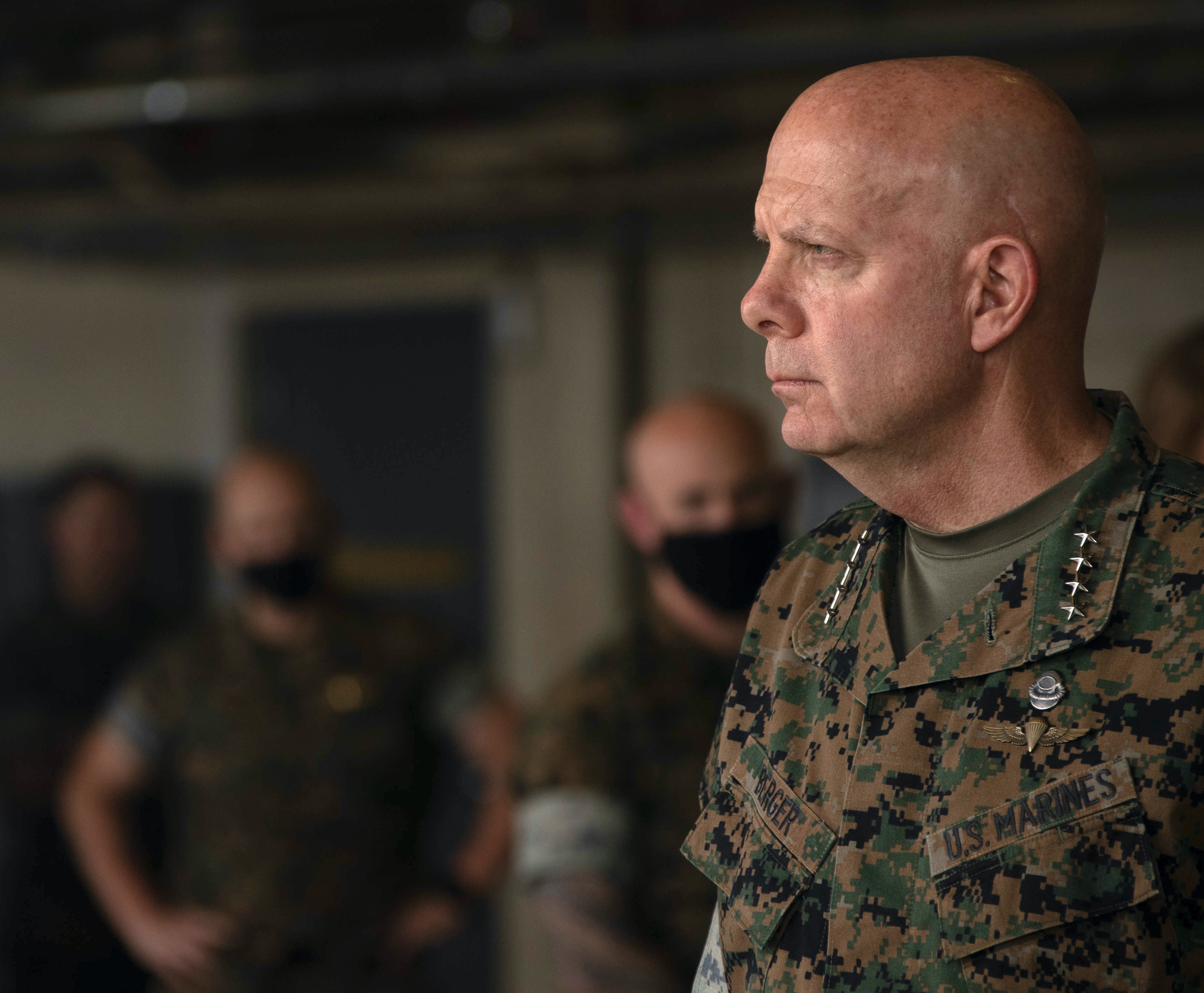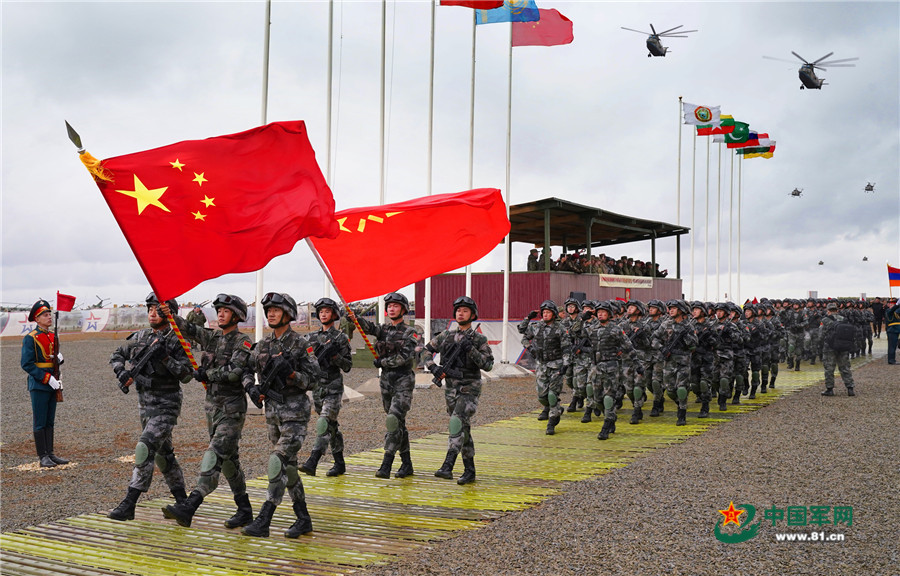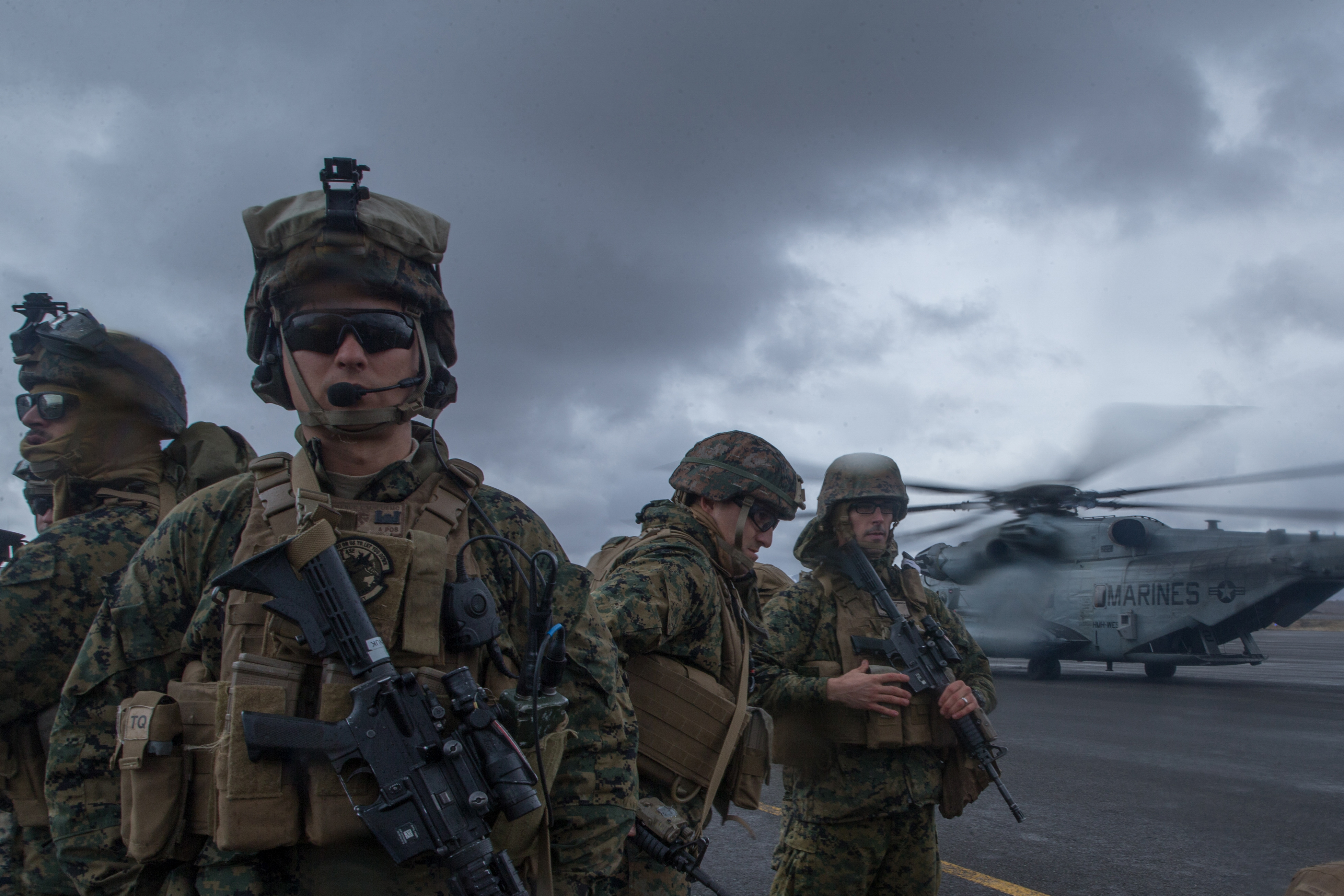
While the commandant of the Marine Corps has ushered in a slew of changes to prepare the service for potential conflict in the Indo-Pacific region, Gen. David Berger today emphasized that he does not believe war between the U.S. and China is inevitable.
Speaking at a Tuesday virtual forum hosted by the Brookings Institution, Berger said he has spent the last decade studying China and said that while war is not unavoidable, the competition between the two countries will continue.
“I am not there with those that believe that war is a foregone conclusion with China. I’m not in that camp. I think there are measures that both sides can take that don’t make it a – something that’s an inevitability. It’s not. I don’t believe that it is,” Berger said. “That said, they clearly have a strategy. They have a plan. They are resourcing that plan. They have a unity of government that gives them an advantage. There are disadvantages in that also. I believe they’re on a march to accomplish their ends – their objectives. And it’s pretty clear and they are open about what those objectives are.”
“I do think it’s going to be an active everyday sort of competition for the foreseeable future. They are continuing to expand,” he said. “We’re trying to sort through – how do we accommodate, but not allow, any one nation to rewrite a set of rules that’s done really well for everybody for 70 years… And that’s — of course –the quandary.”
Marine Corps officials have emphasized that the service’s force design efforts – which include making the service lighter by shedding its heavier equipment so Marines can move easily between islands in the Pacific – are meant to keep pace with the National Defense Strategy’s emphasis on potential conflict with nations like China and Russia.
Some of the recent discourse about countering China in the Indo-Pacific region has included China’s ambitions to take control of Taiwan. Former U.S. Indo-Pacific Command chief Adm. Phil Davidson recently told Congress that he believes China could try to make a move to absorb Taiwan within the next six years.
Berger described Taiwan as an “asymmetrical problem” and noted that Taiwan must defend itself, and therefore the U.S. should find ways to aid Taiwan in doing so.
“You cannot talk about the global competition – or what, strategic competition – without talking about Taiwan and where that fits in. But here I think this is where it’s too simple to look at Taiwan, China and the U.S. in a symmetrical lens,” Berger said.
“It’s an asymmetric problem from a security aspect and it’s more than regional. So one, we’ve got to open our brains a little bit and think it’s not just a – this isn’t a how much firepower do they have versus us versus Taiwan, right. It’s not so simple,” he continued.
Berger said that should China choose to seize control of Taiwan, then the U.S. should be ready for the possibility that the conflict would expand across all domains and outside the Indo-Pacific region.
“The old style of how do you contain, how do you prevent a seizure of Taiwan will probably not [be] applicable going forward because there are capabilities in other domains that weren’t there before,” Berger said.
“And things that are frankly to be determined in some like space, how far any nation will go because the rules are not yet written for sort of the international sort of rule of how things will work in that domain,” he continued. “I think we have to – we are – adjust in the way that we look at any potential conflict over Taiwan. And that I would agree with you a hundred percent has to go into all, much beyond the military and much beyond U.S. versus [People’s Liberation Army Navy]. [It] has to be a wider conversation than that.”
Berger said he sees two potential scenarios for China’s actions in the region.
“One is the inch-by-inch, yard-by-yard, movement forward that we see in the areas like the South China Sea and in other areas where if – in I’m just going to use sort of a martial arts metaphor, where if you lean back, they lean forward,” Berger said. “That works in their favor because there’s no fight there. They just move, move, move forward a little bit at a time.”
“But the other part is a more dynamic, a more kinetic scenario like Taiwan, where it’s clearly in their interest and they have stated so overtly that they want to bring Taiwan underneath the umbrella. And that’s going to be counter to – so far to our U.S. policy,” he added. “I think you look at them through different lenses – the every day, every week competition versus what are the set of circumstances by which the [People’s Republic of China] might move towards Taiwan and what might that look like.”
Berger said that China’s ambitions could also come in the form of delivering humanitarian aid in the event of a natural disaster before the U.S.
“Customarily, the U.S. has been nearby and sent help really quickly. Well, the PLAN – the People’s Republic of China is shrinking the size of their army, growing the size of their navy and marine corps for a reason,” Berger said. “We’re going to have to think through what if they get their first, with medical supplies, with the ability to help ashore, without bringing a whole brigade ashore. How do you – how do we factor all that in? Because the relationship with allies and partners is also built on how we respond to natural disasters when the call for help goes out. What if we’re not first? That’s never been the case before.”
Berger noted that while training with allies and partners is a key part of establishing and maintaining those relationships, the humanitarian aid component is also crucial.
“Back to the how do you use the force to your advantage, how do you develop the relationship with allies and partners – some of it clearly is training and interoperability and the kinetic aspects,” he said. “But some of it frankly is using their tools plus yours in a way that can help mankind when needed. It’s not the first place most people talk in the military, but my experience is when a country needs help and they need it now, every day, every hour matters.”
During the forum, Berger also provided details about the recent Northern Edge exercise, where the Navy, Marine Corps and Air Force experimented with operating concepts in Alaska. The 15th Marine Expeditionary Unit and the Theodore Roosevelt Carrier Strike Group participated in the training event.

The exercise showed that both the Marine Corps and the joint force need to work on logistics and supply, Berger said, because more distributed operations will lead to more contested logistics.
“The sustainment of that force over great distances really becomes challenging if your lines of communication – your supply lines can be threatened. We’re not comfortable with that,” he said. “We haven’t had our supply lines, our operational strategic supply lines – we haven’t had them threatened since World War II, I would offer. So this is new territory for us as well. So first of all, we have work to do on logistics as a joint force, as a Marine Corps.”
“Everybody’s focused on missiles and rockets and aircraft and Joint All-Domain Command and Control – all of which is relevant – all of which is not going to go very far if we don’t address the logistics early on, now. So that’s one part of it,” Berger added.
In addition to the logistics component, the exercise also helped U.S. forces learn how to operate in colder weather and handle scenarios unique to that environment, the commandant said.
“Operating in extreme environs especially you know in the Arctic, in the north, brings an additional set of environmental factors that you don’t face in other places. Great – in other words – to train in Alaska, great to train in Norway. Why? Because there are days when you can’t launch and recover aircraft. There are days when you’re weathered in – when you have to figure out – both sides are facing the same environment,” Berger said. “The machinery works different. Human beings work different. And this is May, right, when the Northern Edge is going on. You work in that environment in December, January, February it’s a whole other aspect to it.”

“Training in extreme cold weather, training in the Arctic, is really important. Why? Because it – for our concepts, second for our equipment, third for our people – changing environments like that and operating in there is very good,” he added.
The Marine Corps continues to experiment with its operating concepts like Expeditionary Advanced Base Operations (EABO) and Littoral Operations in a Contested Environment (LOCE). While Marines’ mobility on islands or shorelines in the Pacific is a key part of employing these concepts, Berger emphasized that the logistics enable these operations.
“You can have all the mobility and all the lethality you want. If you can’t sustain it, you’re going to culminate pretty early. So we have to focus on the logistical aspects,” Berger said. “That’s not easy. It’s solvable, but we’ve got to put our shoulder into it.”
In addition to experimenting with operating concepts, Berger said the Marine Corps is also testing out different configurations and equipment for its infantry battalion by having each Marine division perform an experiment with one battalion.
“I’m convinced that our infantry battalion is not built right for the future, but I also don’t know what the perfect infantry battalion ought to look like. So our approach is – how are we going to learn fast is – we have three Marine divisions. Each one of them selected one battalion – organized differently, trained differently, equipped differently – through the [Marine Corps] Warfighting Lab. And for the next year and a half, two years, as they go through their regular cycle of train and then go deploy overseas, come back, we’ll learn from all three,” Berger said.
“My guess is none of those three is the perfect solution. But three different configurations with three different concepts and three different sets of gear – in a year and a half, two years, we’re going to have the best picture we have of what’s the best – what’s the infantry battalion look like going to the future,” he added.





